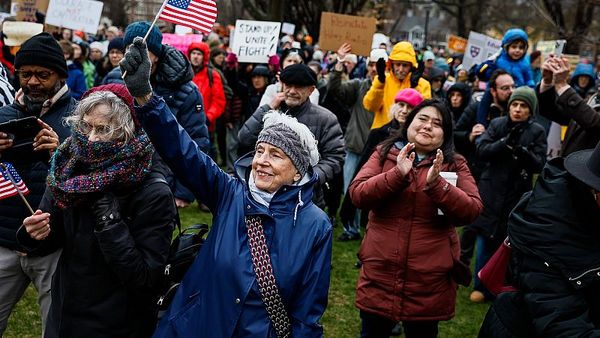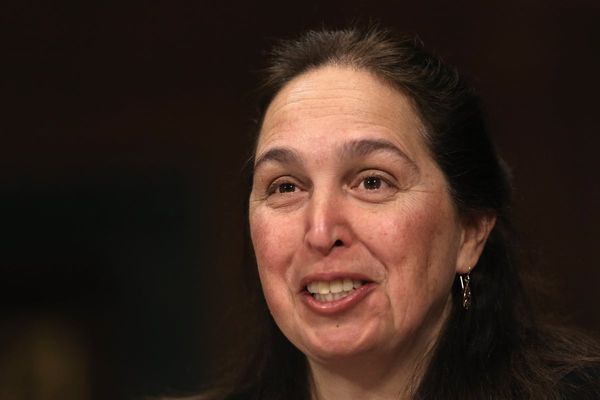
Australian universities have improved their global rankings despite warnings that a proposed international student cap on the horizon could dissuade thousands from applying at the country’s institutions.
The chief executive of Universities Australia, Luke Sheehy, is due to say in a speech on Wednesday that Australian universities face a collective shortfall of more than $500m this year as a result of already existing visa rule changes and “policy chaos” – and this could claim up to 4,500 jobs.
The University of Melbourne reached a historic high of 13th in the world, up from 14th last year, while the University of Sydney rose one place to 18th and the University of New South Wales remained at 19th in the QS World University Rankings, run by the global higher education specialist Quacquarelli Symonds.
The rankings draw from millions of academic papers and insights from 280,000 academics and employers across 1,500 universities.
The latest results, released on Wednesday, found Australian higher education had remained broadly resilient despite a strong showing from Asian institutions leading to a decline in the rankings of British and American universities.
In total, 38 Australian universities received a ranking, including nine that sat in the top 100 and three in the top 20.
But Jessica Turner, the CEO of QS, said Australia’s tighter regulations for international student visas, including stricter English language and financial proof requirements, as well as a new “genuine student test” and a cap on university enrolments could prompt “several thousands of prospective students to look beyond Australia”.
The number of international students in Australia hit a record high of more than 700,000 in February, prompting the federal government to introduce a crackdown on migration.
“[Australia’s] $48bn export sector … relies heavily on international student fees to fund research and maintain its cutting-edge status,” Turner said.
“It is important to balance regulatory measures with the need to support the international education sector and the opportunities it provides.
“We hope that a thoughtful approach will be taken to avoid unintended negative impacts on students, universities and Australia’s global competitiveness.”
The Massachusetts Institute of Technology (MIT) took out the top spot for the 13th year in a row, however two-thirds of US institutions declined year-on-year.
Similarly, only 22% of British universities improved their ranking, compared with almost half (47%) of Australia’s entrants rising – largely due to strong showings in sustainability, academic reputation and internationalisation.
Australia’s universities performed better for its global research partnerships than its “big four” competitors the US, the UK and Canada, and had the most international faculty members.
Strong on sustainability but teacher-student ratios poor
More than half (52%) of Australian universities also improved in the recently introduced sustainability metric, with a national score significantly higher than the global average. The metric analyses how well institutions tackle issues related to social and climate justice.
But Australia’s weak teacher to student ratios and employability left it vulnerable.
More than three-quarters (76%) of Australian universities recorded a decline in their employer reputation, painting a poor picture of how graduates were perceived in the job market, and no Australian universities were in the top 300 for their ratio of faculty to students.
The top-performing institution on the latter metric, Bond University, placed 326th in the world, with an average score of 12.5, significantly below the global average of 28.1.
Ben Sowter, senior vice-president at QS, said improving teaching resourcing should be a “top priority”.
“Australian universities have long been built on the intellectual, cultural and economic benefits derived from internationalisation, and their ability to continue recruiting elite academic talent will determine their success in a shifting higher education landscape,” he said.
Angel Calderon, director of strategic insights at RMIT University and a member of the QS global rankings advisory board, said despite the financial challenges Australian universities had faced in recent years, they had been able to demonstrate “resilience in maintaining outstanding performance”.
International student fees contributed almost $9bn to total university revenue in 2022, the latest data shows, almost a quarter of total revenue ($34.7bn) and well beyond the $481m from upfront student contributions.
At the University of Sydney, international student fees accounted for $1.4bn of the institution’s total revenue in 2022, well exceeding $1bn from the federal government.
“The proposed introduction of cap to the number of international students will be detrimental to the viability of Australian universities, erodes Australia’s educational quality and knowledge production capacity and runs contrary to addressing skills shortages,” Calderon said.
Australian universities are already facing a collective shortfall of more than $500m this year as a result of slower visa processing times and cancellations due to the new regulatory measures.
In Sheehy’s speech he was expected to say: “Seldom has another major export industry been treated as a political plaything in the way international education is right now.
“This bipartisan attack on international students is shortsighted and politically expedient.”







